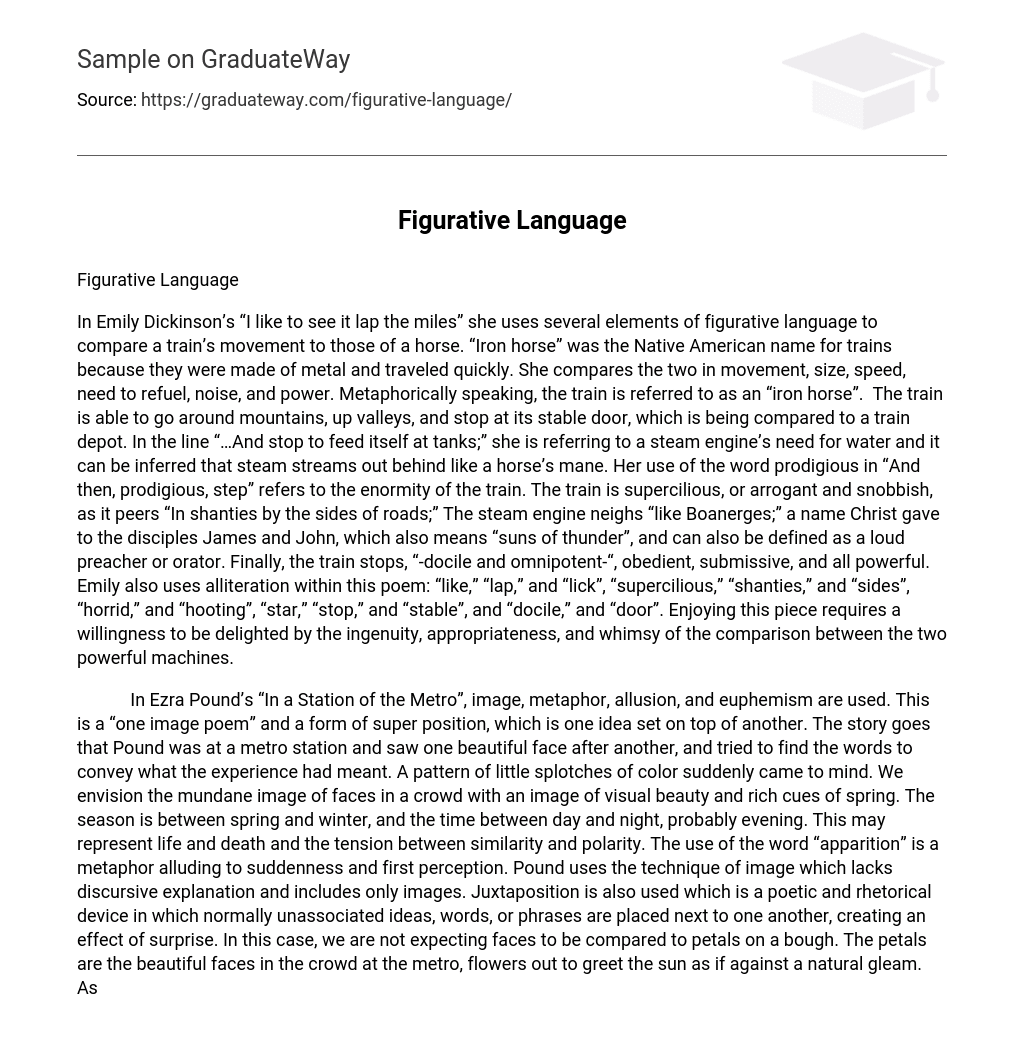In Emily Dickinson’s “I like to see it lap the miles” she uses several elements of figurative language to compare a train’s movement to those of a horse. “Iron horse” was the Native American name for trains because they were made of metal and traveled quickly. She compares the two in movement, size, speed, need to refuel, noise, and power. Metaphorically speaking, the train is referred to as an “iron horse”. The train is able to go around mountains, up valleys, and stop at its stable door, which is being compared to a train depot. In the line “…And stop to feed itself at tanks;” she is referring to a steam engine’s need for water and it can be inferred that steam streams out behind like a horse’s mane. Her use of the word prodigious in “And then, prodigious, step” refers to the enormity of the train. The train is supercilious, or arrogant and snobbish, as it peers “In shanties by the sides of roads;” The steam engine neighs “like Boanerges;” a name Christ gave to the disciples James and John, which also means “suns of thunder”, and can also be defined as a loud preacher or orator. Finally, the train stops, “-docile and omnipotent-“, obedient, submissive, and all powerful. Emily also uses alliteration within this poem: “like,” “lap,” and “lick”, “supercilious,” “shanties,” and “sides”, “horrid,” and “hooting”, “star,” “stop,” and “stable”, and “docile,” and “door”. Enjoying this piece requires a willingness to be delighted by the ingenuity, appropriateness, and whimsy of the comparison between the two powerful machines.
In Ezra Pound’s “In a Station of the Metro”, image, metaphor, allusion, and euphemism are used. This is a “one image poem” and a form of super position, which is one idea set on top of another. The story goes that Pound was at a metro station and saw one beautiful face after another, and tried to find the words to convey what the experience had meant. A pattern of little splotches of color suddenly came to mind. We envision the mundane image of faces in a crowd with an image of visual beauty and rich cues of spring. The season is between spring and winter, and the time between day and night, probably evening. This may represent life and death and the tension between similarity and polarity. The use of the word “apparition” is a metaphor alluding to suddenness and first perception. Pound uses the technique of image which lacks discursive explanation and includes only images. Juxtaposition is also used which is a poetic and rhetorical device in which normally unassociated ideas, words, or phrases are placed next to one another, creating an effect of surprise. In this case, we are not expecting faces to be compared to petals on a bough. The petals are the beautiful faces in the crowd at the metro, flowers out to greet the sun as if against a natural gleam. As stated by Pound himself, “All poetic language is the language of exploration”.





